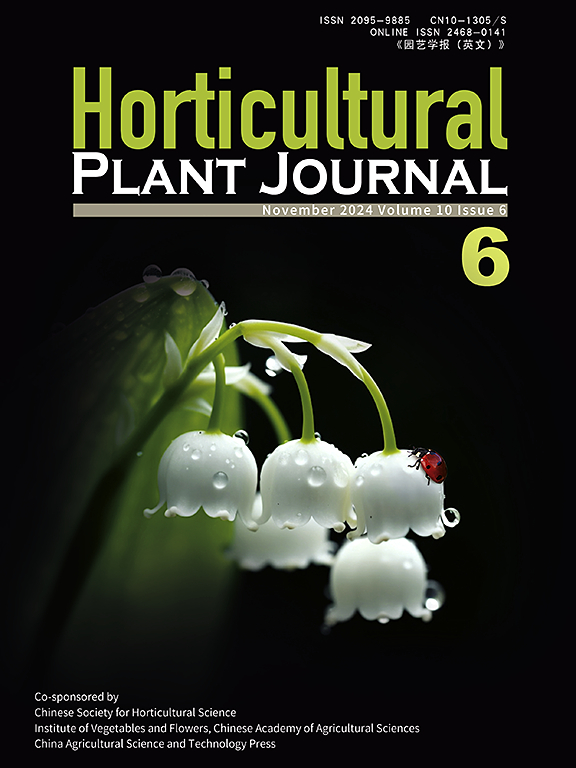独角麦内酯作为提高园艺作物非生物抗逆性的潜在靶点
IF 5.7
1区 农林科学
Q1 HORTICULTURE
引用次数: 0
摘要
农作物产量和品质受到干旱、低温、高温、盐碱、重金属等非生物胁迫的影响,威胁着人类的生存和工业的发展。独角曲内酯(SL)是一类从类胡萝卜素中衍生出来的新型植物激素,产生于植物的根部。SL可以诱导根寄生植物种子萌发,这是首次报道。近年来,研究表明独角麦内酯在植物对非生物胁迫的响应中起调节作用。通过消除活性氧引起的氧化应激,有可能提高光合速率和叶绿素含量,从而增强植物抗旱性。转录组研究探索了外源独角麦内酯诱导植物的信号转导、抗氧化酶活性、转录因子以及胁迫代谢相关基因的表达,初步确定了独角麦内酯对植物生长发育的影响,但诱导作物耐受非生物胁迫的研究尚不清楚。本文从生理和分子两个方面综述了独角麦内酯诱导园艺作物逆境响应的研究进展。提高园艺作物对非生物胁迫的耐受性和生产力具有重要意义。本文章由计算机程序翻译,如有差异,请以英文原文为准。
Strigolactone as a potential target for improving abiotic stress tolerance in horticultural crops
Crop yield and quality are affected by abiotic stresses such as drought, low and high temperature, salinity, and heavy metals, which threaten the survival of human beings and the development of industry. As a new plant hormone derived from carotenoid, strigolactone (SL) is produced in the roots of plants. It was first reported that SL can induce seed germination of root-parasitic plants. In recent years, it has been shown that strigolactone plays a regulatory role in plant response to abiotic stresses. By eliminating oxidative stress caused by reactive oxygen species, it can potentially increase photosynthetic rate, chlorophyll content, and thus enhance plant drought resistance. Transcriptome studies have explored signal transduction, antioxidant enzyme activity, transcription factors, and expression of stress-and metabolism-related genes induced by extrinsic strigolactone in plants, the effects of strigolactone on plant growth and development have been preliminarily determined, but the studies on inducing crop tolerance to abiotic stresses are still unknown. In this review, the physiological and molecular aspects of the induction of the response to stress in horticultural crops by strigolactone were reviewed. It is important to improve the tolerance and productivity of horticultural crops under abiotic stress.
求助全文
通过发布文献求助,成功后即可免费获取论文全文。
去求助
来源期刊

Horticultural Plant Journal
Environmental Science-Ecology
CiteScore
9.60
自引率
14.00%
发文量
293
审稿时长
33 weeks
期刊介绍:
Horticultural Plant Journal (HPJ) is an OPEN ACCESS international journal. HPJ publishes research related to all horticultural plants, including fruits, vegetables, ornamental plants, tea plants, and medicinal plants, etc. The journal covers all aspects of horticultural crop sciences, including germplasm resources, genetics and breeding, tillage and cultivation, physiology and biochemistry, ecology, genomics, biotechnology, plant protection, postharvest processing, etc. Article types include Original research papers, Reviews, and Short communications.
 求助内容:
求助内容: 应助结果提醒方式:
应助结果提醒方式:


